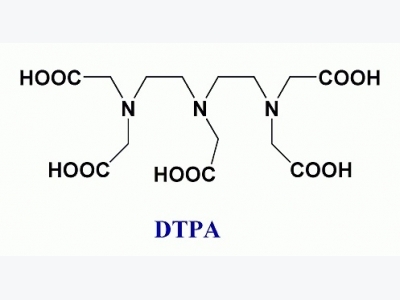Iron Sources in Hydroponics : Which One is the Best ?

Definitely one of the most important problems dealing with the stability of hydroponic solutions is the availability of the iron (Fe+2 or Fe+3) ions. Since iron easily forms hydroxides and insoluble salts with other ions present in hydroponic media it becomes essential for us to provide iron in a way which is accessible to the plant and does not "come out" of the hydroponic solution through precipitation. Within the next few paragraphs I will talk to you about different iron sources available to hydroponic growers and which source is actually the best one we can use in hydroponic nutrient solutions. We will go through the different factors that make an iron source better or worse and finally we will be able to choose one as the ideal source for our nutrient needs.
What is the problem with iron ? The main problem we have with iron is that - unlike most other transition metal ions in hydroponic solutions - it is a very strong hard lewis acid which easily forms insoluble salts with many of the hard lewis bases within our hydroponic solutions. When iron is added to a nutrient solution in its "naked" form (for example when adding iron (II) sulfate) the ion easily reacts with carbonate, phosphate, citrate, oxalate, acetate or hydroxide ions to form insoluble compounds that make the iron effectively unavailable to our plants. To put it in simpler terms, iron ions have a chemical nature which is similar but opposite to that of many other constituents of our hydroponics solution meaning that when they meet together they form a "perfect match" that does not easily separate.
There is not only a problem with the higher inherent chemical match-making of iron with the anions present within the solution but we also have the problem that iron is always present at a much higher concentration than the other micronutrients. So even though some transition metals like copper would suffer from similar problems the fact is that they do not simply because of their much lower concentration (Fe is usually around 3-5 ppm while Cu is usually around 0.05-0.01 ppm).
The solution to this problem is actually easy and comes in the form of chelating agents that "wrap" around the iron ions and make them disappear to anions that may want to form stable salts with them. There are many of these chelating agents with the most commonly used being EDDHA, EDTA and DTPA. They are different due to the fact that their stability is different and their abilities to dissolve iron are also different. While all of them make sure iron stays within solution EDTA only allows this to happen until pH 5-6 while, DTPA takes it until about 8 and EDDHA to more than 9. The most stable iron complex is definitely FeEDDHA but this does not make it necessarily the best candidate for hydroponic growing.
The fact is that although EDDHA binds iron much more strongly it decomposes easier within the hydroponic solution than EDTA or DTPA (this is due to the fact that EDDHA is composed of several different isomers, some of which are not very stable), reason why this complex appears to be but is not the best solution for hydroponic nutrient solutions. The best compromise between stability and durability is earned by DTPA which gives us a very stable complex and a strong resistance to decomposition. So next time you are looking into getting a new complex for your Fe needs, try FeDTPA (this salt can also be used with my hydroponic calculator).
Có thể bạn quan tâm
 Is ortho-silicic acid worth the additional expense in hydroponics?
Is ortho-silicic acid worth the additional expense in hydroponics? Silicon is all the rage right now and different silicon product manufacturers are racing to produce commercial products that contain more and more biologically
 Salicylic acid and its positive effect in hydroponics
Salicylic acid and its positive effect in hydroponics Salicylic acid is a simple organic molecule with the structure showed above. Salicylic acid and its positive effect in hydroponics
 Five ways to increase your seed germination rates
Five ways to increase your seed germination rates When you start plants from seeds one of the most important things you want to achieve is a very high and fast germination rate.